
The London Borough of Bexley is a London borough in south-east London, forming part of Outer London. It has a population of 248,287. The main settlements are Sidcup, Erith, Bexleyheath, Crayford, Welling and Old Bexley. The London Borough of Bexley is within the Thames Gateway, an area designated as a national priority for urban regeneration. The local authority is Bexley London Borough Council.

Bexley is an area of south-eastern Greater London, England and part of the London Borough of Bexley. It is sometimes known as Bexley Village or Old Bexley to differentiate the area from the wider borough. It is located 13 miles (21 km) east-southeast of Charing Cross and south of Bexleyheath.

Old Bexley and Sidcup is a constituency in Greater London represented in the House of Commons of the UK Parliament since its 1983 creation. Its first Member of Parliament (MP) was former Prime Minister Edward Heath, who previously represented Bexley (1950–1974) and Sidcup (1974–1983). The seat has been held since a 2021 by-election by Louie French of the Conservative Party, following the death of incumbent James Brokenshire.

Barnehurst is a town and electoral ward in South East London within the London Borough of Bexley. It lies north east of Bexleyheath, and 13.0 miles (20 km) east south-east of Charing Cross. It is separated from North Bexleyheath by the A220, Erith Road.
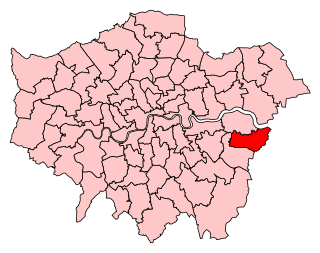
Bexleyheath and Crayford is a constituency in Greater London represented in the House of Commons of the UK Parliament since 2005 by David Evennett, a Conservative.
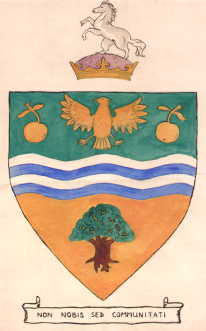
Bexley was a local government district in north west Kent from 1880 to 1965 covering the parish of Bexley, which included both Bexley village and Bexleyheath.
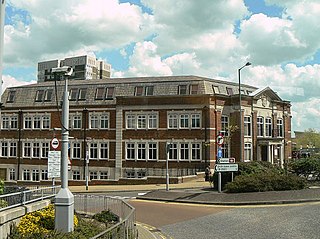
Erith was a local government district in north west Kent from 1876 to 1965 around the town of Erith. It also included the generally suburban areas of Northumberland Heath, Belvedere, and parts of Barnehurst, Bexleyheath, Crayford and the SE2 London Postal District of Abbey Wood.

The London Government Act 1963 is an act of the Parliament of the United Kingdom, which created Greater London and a new local government structure within it. The Act significantly reduced the number of local government districts in the area, resulting in local authorities responsible for larger areas and populations. The upper tier of local government was reformed to cover the whole of the Greater London area and with a more strategic role; and the split of functions between upper and lower tiers was recast. The Act classified the boroughs into inner and outer London groups. The City of London and its corporation were essentially unreformed by the legislation. Subsequent amendments to the Act have significantly amended the upper tier arrangements, with the Greater London Council abolished in 1986, and the Greater London Authority introduced in 2000. As of 2024, the London boroughs are more or less identical to those created in 1965, although with some enhanced powers over services such as waste management and education.

Bexley and Bromley is a constituency represented in the London Assembly. It consists of the combined areas of the London Borough of Bexley and the London Borough of Bromley. The constituency is represented by Thomas Turrell, a Conservative, first elected in the 2024 election.

Hackney London Borough Council, also known as Hackney Council, is the local authority for the London Borough of Hackney, in Greater London, England. It is a London borough council, one of 32 in London. The council has been under Labour majority control since 2002. Since 2002 the council has been led by a directly elected mayor. The council meets at Hackney Town Hall and has its main offices in the adjoining Hackney Service Centre.

Newham London Borough Council also known as Newham Council, is the local authority for the London Borough of Newham in Greater London, England. It is a London borough council, one of 32 in London. The council has been under Labour majority control since 1971. It has been led by a directly elected mayor since 2002. The council meets at Newham Town Hall in East Ham and has its main offices at 1000 Dockside Road, overlooking the Royal Albert Dock.

Islington London Borough Council, also known as Islington Council, is the local authority for the London Borough of Islington in Greater London, England. It is a London borough council, one of 32 in London. The council has been under Labour majority control since 2010. The council meets at Islington Town Hall.

Lewisham London Borough Council, also known as Lewisham Council, is the local authority for the London Borough of Lewisham in Greater London, England. It is a London borough council, one of 32 in London. The council has been under Labour majority control since 2010. It has been led by a directly elected mayor since 2002. The council meets at Lewisham Town Hall in the Catford area of the borough.

Barnet London Borough Council, also known as Barnet Council, is the local authority for the London Borough of Barnet in Greater London, England. It is a London borough council, one of 32 in London. The council has been under Labour majority control since 2022. The council meets at Hendon Town Hall and has its main offices at 2 Bristol Avenue in Colindale.

Sutton London Borough Council, also known as Sutton Council, is the local authority for the London Borough of Sutton in Greater London, England. It is a London borough council, one of 32 in London. The council has been under Liberal Democrat majority control since 1990. The council is based at the Civic Offices in Sutton.

Brent London Borough Council, also known as Brent Council, is the local authority for the London Borough of Brent in Greater London, England. It is a London borough council, one of 32 in London. The council has been under Labour majority control since 2010. It is based at Brent Civic Centre in Engineers Way, Wembley.

Croydon London Borough Council, which styles itself Croydon Council, is the local authority for the London Borough of Croydon in Greater London, England. It is a London borough council, one of 32 in London. Croydon is divided into 28 wards, electing 70 councillors. Since 2022 the council has been led by a directly elected mayor. The council has been under no overall control since 2022, being run by a Conservative minority administration. The council meets at Croydon Town Hall and has its main offices in the adjoining Bernard Weatherill House.
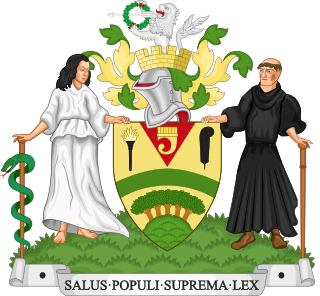
Harrow London Borough Council, also known as Harrow Council, is the local authority for the London Borough of Harrow in Greater London, England. It is a London borough council, one of 32 in London. The council has been under Conservative majority control since 2022. Full council meetings are held at the Harrow Arts Centre and the council's main offices are at the Council Hub in Wealdstone.
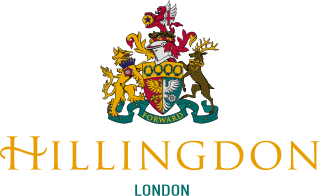
Hillingdon London Borough Council, which styles itself Hillingdon Council, is the local authority for the London Borough of Hillingdon in Greater London, England. It is a London borough council, one of 32 in London. The council has been under Conservative majority control since 2006. The council is based at Hillingdon Civic Centre in Uxbridge.

Kingston upon Thames London Borough Council is the local authority for the Royal Borough of Kingston upon Thames in Greater London, England. It is a London borough council, one of 32 in the United Kingdom capital of London.






















